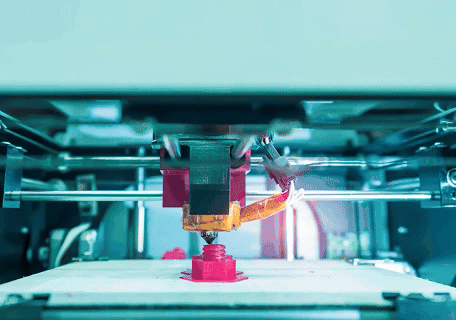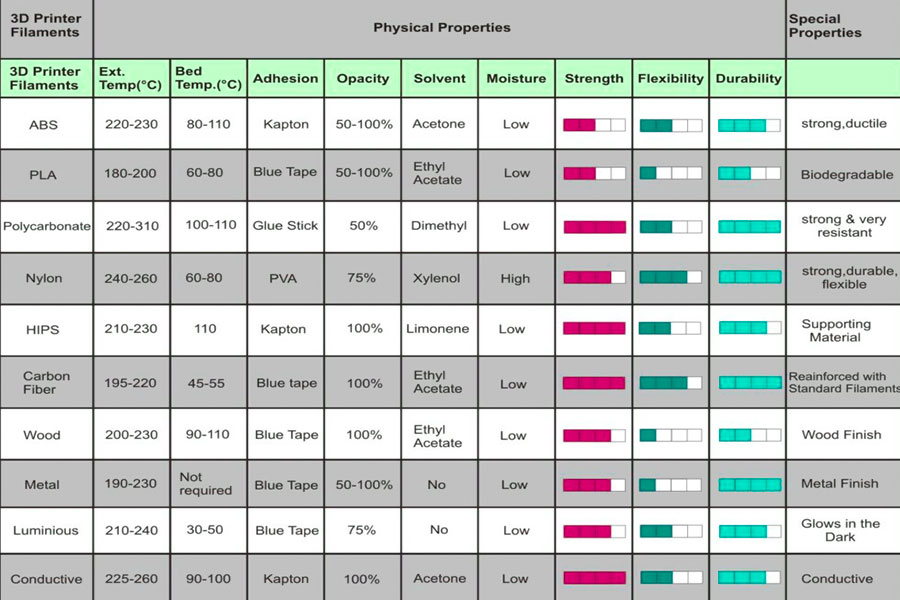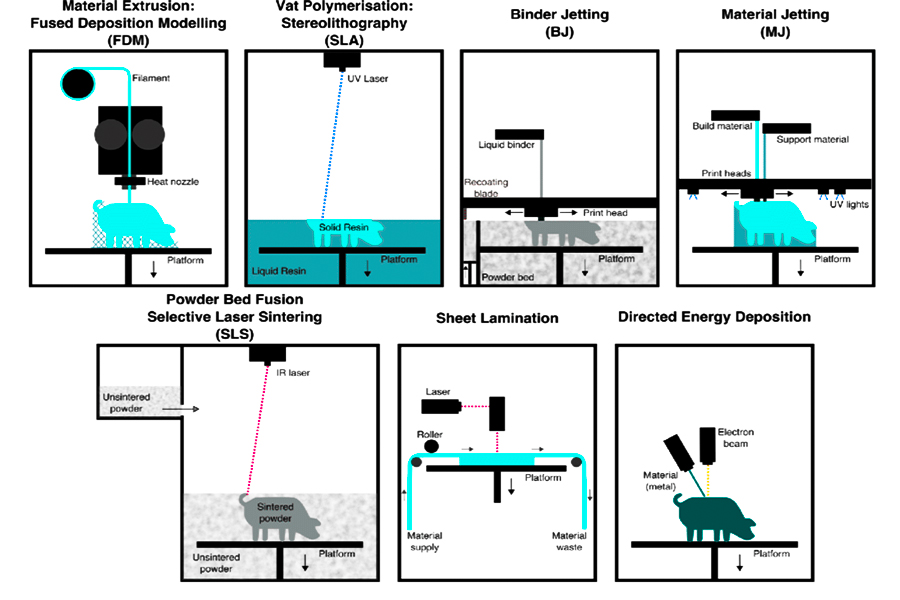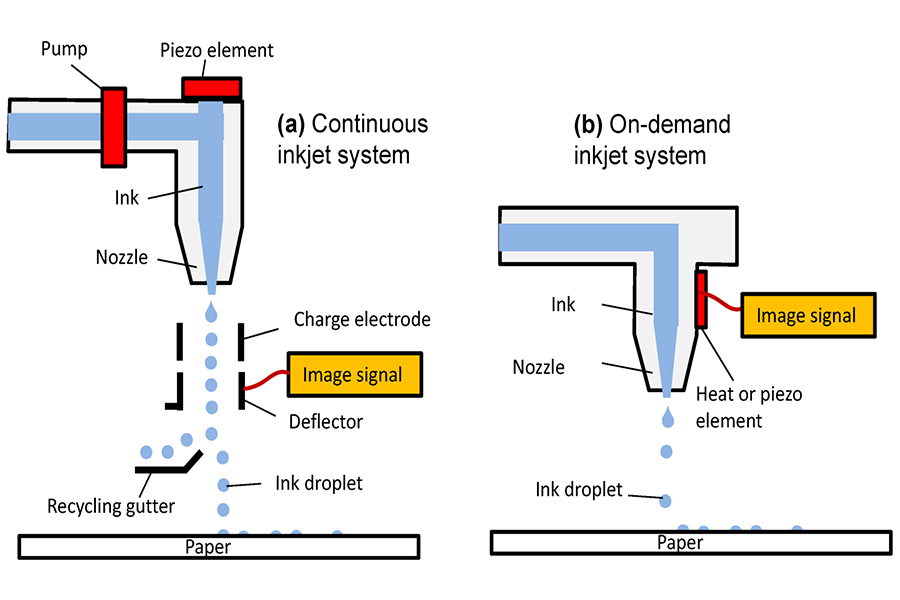3D printing is an advanced manufacturing technique that converts digital models into solid objects by layering them on top of each other, also known as additive manufacturing. 3dprinting generates 3D entities directly from CAD design models or computer designs such as 3D scan data, greatly reducing production cycles and reduce research and development costs. Its core technologies include photopolymerization (SLA), molten deposition modeling (FDM) and selective laser sintering (SLS). Flexible for plastics, metals, ceramics and even biomaterials, it is widely used in industrial prototypes, medical models, aerospace components and personalized consumer goods.
JS Company has been deeply involved in 3D printing services for many years, providing one-stop solutions for customers. Whether it's the demand for precision 3D model printing or the manufacture of complex structural functional components, JS company can achieve high quality and efficient customization.

What is 3D printing?
3D printing is a multilayer material stacking technology based on digital model. It creates 3D models by CAD design or 3D scanning, and then uses equipment to mold plastics, metals and other materials layer by layer into solid objects. Compared to traditional processes, it requires no molds and can quickly manufacture complex geometric structures such as hollow grids and irregular surfaces.
In medicine, 3D-printed models are used to print patients' bones or titanium alloy joints for precise adaptation. Industry relies on 3D printing services for rapid iteration product prototypes, verification of structural performance, or direct production of small batches of components, such as aerospace light scaffolds or personalized consumer electronics casings.

How to choose 3D printing materials?
Combining common industrial application scenarios and technical characteristics, the following recommendations are made for the selection of 3D printing materials:
1.Material selection by technology type
| Technical type | Commonly used | Features | Typical application scenarios |
| FDM | PLA, ABS, PETG, nylon | Low cost, convenient operation and moderate accuracy. | Rapid prototyping, basic features components. |
| SLA | Photosensitive resin (hard/flexible) | The surface was smooth and nuanced. | Precision parts, medical models. |
| SLS | Nylon (PA12/PA6), TPU | High temperature resistance, high strength, no support. | Functional components, lightweight construction. |
| Metal Printing | Stainless steel, titanium alloy, aluminum alloy | High strength, corrosion-resistant, conductive and heat-conducting. | Aerospace and automotive moulds. |
2.Choose according to the characteristics of the material
| Material type | Core strengths | Preventive measures |
| PLA | Environmental protection, non-toxic, cost-effective. | Poor temperature resistance (<60°C). |
| ABS | Shock resistant, plating. | During the printing process, there is a smell and the platform needs to be heated. |
| Nylon (PA) | Wear-resistant self-lubrication. | Moisture absorption, moisture-proof storage is required. |
| TPU | Good flexibility, not easy to tear. | Printing needs to slow down. |
| Photosensitive resin | Available in high-resolution, transparent/semi-transparent options. | UV-proof when stored. |
| Metal powder | It can be manufactured with high strength and complex structure. | Post-treatment is complex (defat, sintering). |
3.Key selection determinants
Mechanical properties
- Strength requirements: Nylon and metal preferred.
- Temperature resistance: ABS (80-100°C) vs PA (120°C+).
Cost control
- Rapid verification: PLA/FDM recommended.
- Precision production: Optional photosensitive resin or SLS nylon.
Post requirements processed
- No paint: Metal/ceramic.
- Color customization: Multicolor ABS/PLA filament.

What are the differences between different types of 3D printing technologies?
Here's a comparison of the core differences between the three mainstream 3D printing technologies:
1.Comparison of core procedures
| Technical type | Forming principle | Type of Material | Accuracy control | Surface quality |
| FDM | Hot molten silk material is layered extruded. | Thermoplastics (PLA/ABS). | Depends on nozzle accuracy (±0.1-0.5mm). | Coarse (requires polishing). |
| SLA | UV laser curing liquid photosensitive resin. | Photosensitive resin. | High precision (± 0.05mm). | Smooth (close to injection molding). |
| SLS | Laser sintering of nylon/metal powder. | Engineering plastics/metals. | Moderate accuracy (±0.1-0.3mm). | Porous structure (coating required). |
2.Comparison of technical advantages and disadvantages
| Dimension | FDM | SLA | SLS |
| Advantage | Low cost, wide range of materials, large printing size. | High resolution, high detail performance. | High strength, no support structure required. |
| Disadvantage | Surface roughness and limited accuracy. | Resins are brittle and complex to handle. | Expensive equipment and troublesome powder processing. |

What are the basic design principles that 3D printing model need to follow?
1.Wall thickness design principles
- Homogenization and minimization: The wall thickness of 3D printing models should be set to a minimum according to material properties (>1 mm as recommended by ABS) to avoid deformation or fracture due to thinness. JS company supports thin walls up to 0.3mm thick, balanced strength and lightweight.
- Gradient transition: Sudden changes in wall thickness can easily lead to stress concentration, so gradient structures should be used in design. JS's SLA equipment can handle these details with precision.
2.Optimizing support structure
- Suspension angle limit: Additional support is required when the Suspension angles exceeds 45 degrees. JS company uses soluble support materials,such as PVA, that peel easily and leave no trace after processing.
- Grid design: Complex internal structures can reduce material consumption through honeycomb support, and JS algorithms can automatically generate efficient support solutions.
3.Dimensional accuracy control
- Tolerance reservation: The default tolerance is ±0.1mm and precision parts require additional compensation. JS's industrial grade FDM equipment can achieve high precision of ±0.05mm.
- Dimension compensation: Thermoplastic materials have shrinkage effects and need to be adjusted according to the properties of the materials during design. The JS technical team can provide custom parameters.
4.structure optimization
- Lattice filling: Lowering weight while maintaining strength, JS's SLS nylon printing supports free lattice density adjustment from 100% to 20%.
- Avoid print heads: JS's printing platform automatically layers and processes complex paths to prevent complex cavities from obstructing the flow of consumables.
5.Surface quality assurance
- Draft angle: Perpendicular plane transmission angles are ≥3 degrees, and JS Light Curing (SLA) technique achieves non-layered mirror effect.
- Hole treatment: Hole diameter less than 5mm, easy to blockage. It is recommended that they be designed as sinkholes or later expansion holes. JS's post-processing equipment can provide grinding and polishing services.
How to balance efficiency and accuracy between layer thickness and printing speed?
1.Layered strategy and material adaptation
JS Company dynamically balances efficiency and accuracy with intelligent hierarchical algorithms:
- High-precision model: SLA photocured layer thickness as low as 0.025mm and surface smoothness up to medical-grade standards (e.g. orthopedic guide plate surface roughness Ra<0.8 μm).
- Rapid prototyping mode: High speed printing with a thickness of 0.3mm (speed 80mm³/s) by temperature control ±1°C using FDM technology, an efficiency increase of 30%.
- Dynamic speed regulation: Real-time monitoring of complex areas in the model, automatic speed reduction to ensure accuracy (such as suspension structure), smooth area acceleration to shorten the duration.
2.Accurate matching of materials and processes
- Thermoplastic material: ABS/PLA with nozzle temperature control (±1°C) and pressure optimization, layered thickness relaxed to 0.2mm without warping.
- Photosensitive resin: LED matrix partition exposure technology increases SLA curing speed by three times.
- Metal/Ceramic: SLS nylon printing supports 100% density adjustment, and the JS Company titanium alloy parts with forging-strength levels.
3.Post processing efficiency improvement plan
- Surface optimization: The FDM model can achieve polished SLA gloss, cost reduction of 50%.
- Functional enhancement: Electroplated nickel with conductivity reduced to 0.01Ω· cm printing of conductive silver ink printing.
- Fast delivery: Automated reprocessing lines reduce the delivery cycle of medical models to 48 hours (traditional 72 hours).
What is the importance of ink jet printing in 3D printing?
As an important branch of 3D printing, Ink jet printing has become a key technology in complex structure manufacturing, personalized customization and high performance parts production through precise control of micro-nozzles and multi-material compatibility. Its importance is reflected in the following:
1.High precision and meticulous performance
- Microscale printing: Ink jet technology uses micrometer level nozzles to precisely control material deposition, achieving complex geometry and fine details (such as microsensors).
- Surface smoothness: Layer upon layer of solidified liquid resin,such as UV curing resin. The surface quality is similar to that of traditional injection molding parts, suitable for high precision prototypes or consumer electronics components.
2.Integration of multiple materials and colors
- Hybrid material printing: Different materials (e.g. rigid, flexible, transparent resin) can be combined for a single printing to produce fully functional components (e.g. soft robots with sensors).
- Full-color 3D printing: Full-color models (such as medical anatomical anatomy models architectural visualizations) can be achieved by using an inkjet head directly to inkjet without the need for post-processing coloring.
3.Efficient production and rapid iteration
- High-speed printing: The nozzle works in parallel, shortens production time and is suitable for small volume customization (e.g. braces and hearing aids).
- Production on demand: Do not need mold, rapid digital manufacturing, to speed up the product development cycles.
4.Physical diversity and innovation
- Compatible with a wide range of materials: In addition to resins, conductive ink and bioinks can be printed, promoting applications in electronics and biomedical fields such as 3D printing circuits and artificial tissues.
- Sustainability: Some technologies use biodegradable materials, in line with environmental trends.
5.Technical constraints and improvement directions
- Material cost: The price of specialized photosensitive resin is relatively high and the development of low-cost materials needs to be promoted.
- Post-treatment requirements: some components need to be cleaned and re-solidified, process automation is the future focus.
- Size challenge: At present, it is better suited to small and medium-sized components, while large structures still require additional technology.

How to evaluate the professionalism of a 3D printing shop?
Technology Strength Assessment
1.Advanced equipment
- Check that the service provider is equipped with industrial-grade equipment (e.g. JS company's SLA light curing equipment, FDM industrial machine, SLS nylon printer with equipment accuracy ± 0.02mm and layer thickness as low as 0.025mm).
- Preference is given to service providers that support multi-technology integration,such as inkjet printing+laser sintering, to meet complex requirements.
2.Material adaptability
- Verify that its material base includes engineering plastics (ABS/PLA), metals (titanium alloys), ceramics, biomaterials, etc.
- Provide material performance test reports (such as tensile strength, hot deformation temperature, etc.) to ensure compliance with product requirements.
Service Capability Verification
1.Design support
- Technical evaluation and optimization suggestions wall thickness and support structure can be provided free of charge.
- Notice if it has reverse engineering capabilities (e.g. 3D scan repair, STL file repair).
- Depending on the urgency of the project, ask the service provider to specify a tiering strategy and printing speed.
- Data on the delivery cycle of historical orders are required (JS small batch orders are delivered within an average of 3 days).
3.Post processing support
- Check for value-added services such as polishing, dyeing and plating (e.g. JS shows surface roughness Ra<0.8 μm after polishing).
- Verify that it supports small batch customization.
Quality control system
1.Accuracy verification
- ISO 9001 certification reports and third-party testing reports are required.
- Sampling inspection of product size tolerance and surface quality.
2.Reliability testing
- Enquire whether ageing tests (e.g. high temperature and high humidity cycling) and mechanical performance tests tensile/compressive strength) have been conducted.
- Notice if it is industry certification (for example, whether aerospace components meet AMS 4999 standard).
Cost transparency
1.Quotation details
- Please separate printing, materials and post-processing costs to avoid hidden costs.
- Compare unit costs of similar service providers ( for example, JS's FDM printing cost is 20% lower than the market price).
2.economies of scale
Priority should be given to service providers with more than 100,000 hours of printing per year (JS has a large-scale production line that reduces marginal costs).
Cases and reputations
1.Industry case studies
- Check the official website or case library for success stories.
- Focus on cases similar to your own (healthcare, electronics, industry, etc.)
2.Client reviews
Viewing user feedback through industry forums or third-party platforms such as G2 focuses on on-time product delivery and aftermarket response (JS official website shows 98%% customer satisfaction).
Five reasons to choose JS company's 3D printing services
1.Industrial-grade precision manufacturing: Equipped with SLA light curing equipment (±0.02mm accuracy), industrial FDM (±0.05mm), SLS nylon printing supports 100% density to 20% crystal lattice free adjustment with 40% weight loss and constant strength.
2.Comprehensive material compatibility: Includes engineering plastics (ABS/PLA), metals (titanium alloys), ceramics, biodegradable materials and conductive silver ink, supporting parameterized material selection (e.g. PEEK resistance to temperatures below 300°C).
3.Cost optimization and small batch customization: By combining 3D printing and injection molding processes, large-scale production costs can be reduced to 60% of traditional methods, especially for small orders of 100-1000 pieces. Water-soluble auxiliary materials can reduce reprocessing costs by 70% and delivery cycles by 30%.
4.Full Chain Digital Services: From CAD modeling to finished product inspection, 18 node data loops ensure 100% restoration of design intent.
5.Global Service Network: We provide 3D printing services to a number of countries worldwide. For small orders (≤100 pieces), delivery can be made as soon as 48 hours. For medical emergencies, we promise 24-hour fast delivery. The bilingual engineering team provides remote assistance such as model restoration and parameter optimization.
Summary
3D printing, at the heart of additive manufacturing, is reshaping global manufacturing landscape. It overcomes the limitation of traditional subtractive manufacturing processes, and enables numerous fields with its advantages of high precision, flexibility and low cost. From biocompatible implants to lightweight aerospace components, from personalized consumer electronics to complex industrial prototypes, 3D printing not only accelerates product iteration, but also facilitates frontier expansion in innovative design and functionality.
In the future, 3D printing will continue to drive industrial upgrading as smart manufacturing and green manufacturing are deeply integrated. JS helps enterprises achieve personalized, efficient, low-carbon manufacturing and redefine global industry chain values through multi-material collaborative printing and hybrid manufacturing.
Disclaimer
The content of this page is for informational purposes only.JS SeriesNo representations or warranties of any kind, express or implied, are made as to the accuracy, completeness or validity of the information. It should not be inferred that the performance parameters, geometric tolerances, specific design features,material quality and type or workmanship that the third-party supplier or manufacturer will provide through the jusheng network. This is the responsibility of the buyerAsk for a quote for partsto determine the specific requirements for these parts.please Contact us Learn more information.
JS Team
JS is an industry-leading companyFocus on custom manufacturing solutions. With over 20 years of experience serving more than 5,000 customers,we focus on high precisionCNC machining,Sheet metal fabrication,3D printing,Injection molding,metal stamping,and other one-stop manufacturing services.
Our factory is equipped with more than 100 state-of-the-art 5-axis machining centers and is ISO 9001:2015 certified. We provide fast, efficient and high-quality manufacturing solutions to customers in more than 150 countries around the world. Whether it's low-volume production or mass customization, we can meet your needs with the fastest delivery within 24 hours. chooseJS TechnologyIt means choosing efficiency, quality and professionalism.
To learn more, please visit our website:jsrpm.com
FAQs
1.How can 3D printing reduce material waste?
Traditional manufacturing often requires cutting and engraving, with a waste rate of 30% -50%. 3D printing is additive manufacturing, which involves printing only the parts needed, with a material utilization rate of over 90%. It is particularly suitable for small or complex production.
2.What is the best FDM printing layer thickness setting?
The prototype is rough, with layers of 200-300 microns (0.2-0.3 mm) thick, fast but rough on the surface. The model is excellent, with layers 50-100 microns (0.05-0.1 mm) thick, better detail and longer processing time.
3.Are SLS-printed powder materials reusable?
SLS-printed powder material can be reused, but after repeated use, its flowability decreases and their strength decreases slightly. The recovery rate of metal powder can be over 90%, and the number of uses needs to be controlled according to the material type to ensure performance.
4.Is 3D printing expensive?
Small plastic printers for home use range from $280 to $1,400, and are suitable for DIY and small batch production. Mass production relies on industrial-grade metal/high-performance printers, requiring tens of thousands to millions.






